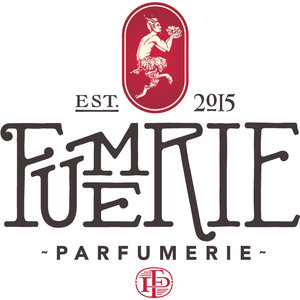Leather
An often overlooked family of fragrances centered around dry, woody notes that recall the aroma of leather. It is important to note that these fragrances do not contain leather; rather, they are composed of materials that have been traditionally used to cure and scent leather. This fragrance family has its roots in the tanneries of France during the Renaissance. During this time, leather was treated with nitrogenous waste used to make the hides supple and kill bacteria. In order to mask the unpleasant aroma of the curing and tanning processes, the hides were scented. It is these materials with which the hides are scented that are responsible for the characteristic leather aroma with which we are all familiar. Each region had their own recipe for scenting tanned hides. In Italy, musk, civet and orris butter were used; in Spain leather goods were scented with camphor and ambergris; in France leather was scented with orange blossom, orris, musk and violet. During this time, leather gloves were very much in fashion and the Gantiers (the Guild of Glovers) used this scented leather to produce gloves for royalty and nobility. These scented gloves proved so popular that clients began to request personal fragrances with the same delightful aroma which gave way to the modern perfume industry in Grasse. While the popularity of scented gloves has waned, the rich history of the region lives on in the Leather fragrance family.
In addition to straightforward leather fragrances, this family also contains smoky fragrances that recall the aroma of charred wood and fragrances with dominant notes of tobacco. Fragrances in this family are characterized by their intense dryness—they possess a decidedly parched quality. That being said, there are many sub-categories within the Leather family including leather fragrances with citrus accents, green accents, gourmand accents and white floral accents. The Leather family is also home to the iconic Russian leathers: leather fragrances that have a smoky character due to the use of birch tar. Russian leather gets its name from its country of origin—during the tanning process, the rectified tar of the birch tree is used in order to imbue the leather with a natural water-resistant quality. Following the Russian revolution, Europe experienced a vast influx of Russian émigrés. Russian leather came to be associated with a faraway land, travel and adventure. This idyllic view of Russia was further reinforced by the Ballets Russes, an itinerant ballet company based in Paris that performed between 1909 and 1929 throughout Europe. As a result, almost every fragrance house offered a Russian leather or Cuir de Russie fragrance.
ACQUA DI SALE Profumum Roma
AMBRE RUSSE Parfum d'Empire
BUIO Meo Fusciuni
BOIS D'ASCÈSE Naomi Goodsir
CORPALIUM Marlou
CORPUS EQUIS Naomi Goodsir
CUIR ANDALOU Rania J
CUIR CAVALIER MDCI
CUIR GARAMANTE MDCI
CUIR OTTOMAN Parfum d'Empire
CUIR VELOURS Naomi Goodsir
CUOIUM Orto Parisi
DAÏMO Lubin
DARK RIDE Xyrena
DUKE OF BURGUNDY Moth and Rabbit
DURO Nasomatto
EAU DE GLOIRE Parfum d’Empire
EPONA Papillon
FISCHERSUND NO 23 Fischersund
FISCHERSUND NO 54 Fischersund
HEMINGWAY Masque Milano
IEROFANTE Quartana
ISLAND LUSH Goldfield & Banks
LA HAINE Moth & Rabbit
LAMPBLACK FZOTIC Bruno Fazzolari
LEATHER IN BOURBON Scents of Wood
LILY OF THE VALLEY Quartana
LONESTAR MEMORIES Tauer
LUCE Meo Fusciuni
MELANCHOLIA Moth and Rabbit
MONTABACO VERANO Ormonde Jayne
MX. Eris Parfums
MXXX. Eris Parfums
NIGHT FLOWER Eris Parfums
PEAU D’ESPAGNE Oriza L. Legrand
PRIVATE LABEL Jovoy
RUADE Parfum d’Empire
RUSSIAN TEA Masque Milano
SCORPIO RISING Eris Parfums
SNEAKERHEAD Xyrena
THE COBRA & THE CANARY Imaginary Authors
TABAC TABOU Parfum d'Empire
VARANASI Meo Fusciuni

